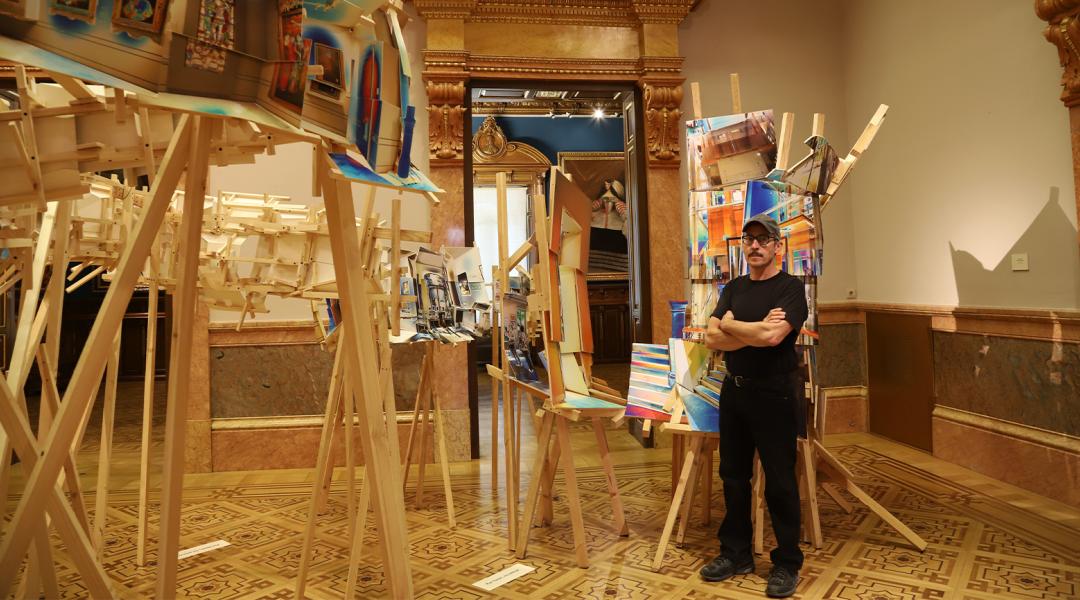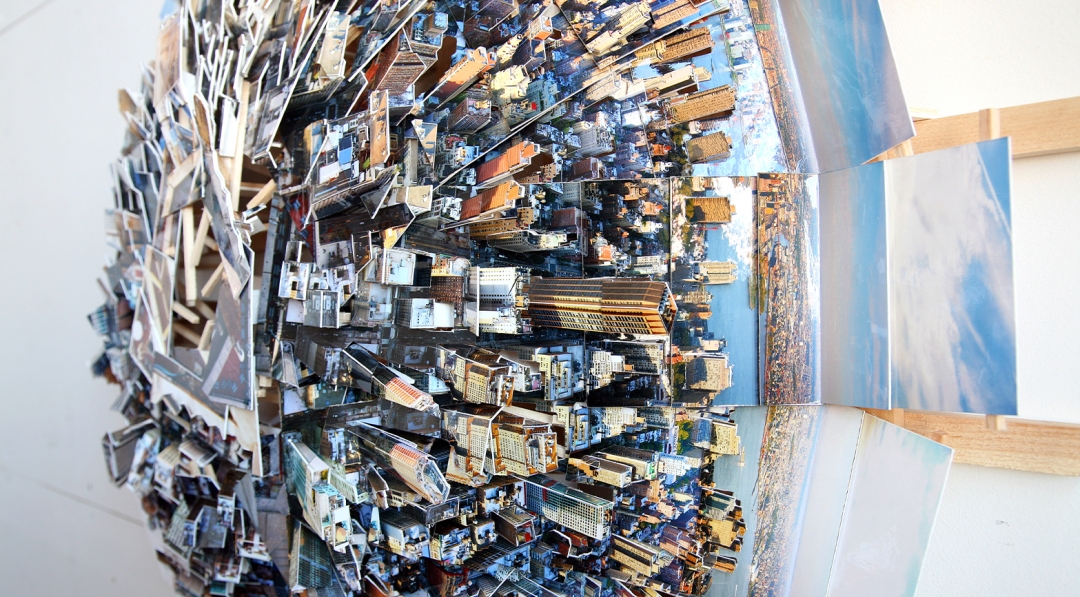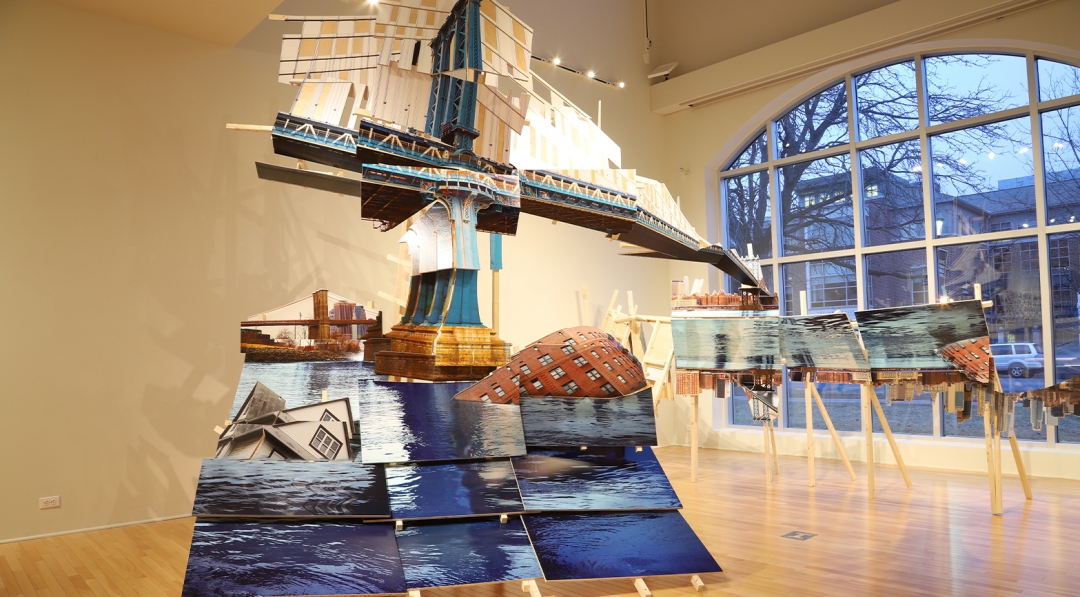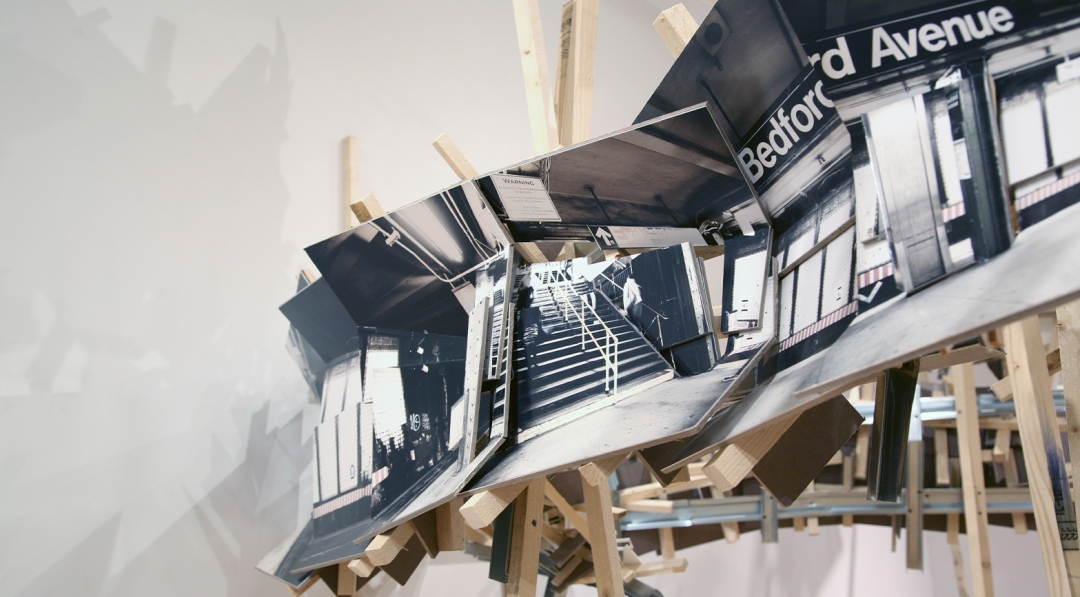Isidro Blasco
Photography, Architecture and Memory

Although he lives in New York, Isidro Blasco hasn’t forgot its roots and has just opened a studio in Madrid, a city that is currently showcasing 'Espacio emergente', a site-specific installation at the Lázaro Galdiano Museum until 26 January.
The most distant childhood memories of Isidro Blasco (Madrid, 1962) are “the flames coming out of the wood-fired oven that my father, artist Arcadio Blasco, would feed all night long.” There, Isidro learned everything about form and how to master it, about how to express an idea by working materials with his hands. The man who today is one of the greatest exponents of contemporary sculpture, had, at the early age of 12, his own corner with a table to carry out his “experiments.” As he says: “What happened to many artists’ children happened to me: I never decided to become an artist; it was the natural thing to do at home.”
In 1996, Blasco, whose works have been showcased at the MoMA, the Whitney, the Tweed Museum of Art and the Chicago Institute of Contemporary Art, among others, took up residence in New York. However, he has recently flown back to his native city to open a studio in Carabanchel, "a very quiet place to work and concentrate."
Madrid is also the city hosting the exhibition Isidro Blasco. Emerging Space at the Lázaro Galdiano Museum until 26 January. It is a site-specific sculptural installation for the museum’s main ballroom. “It’s an installation created on a wooden structure, very architectural, showing photos taken in the museum’s rooms. The structure grows from one end of the room to the other in a very organic way.”

Detail of the sculpture 'New York Planet Night'. © Courtesy of Isidro Blasco
Technique as a support for creation
In Emerging Space, as in the great majority of his work, Blasco brings into play artistic perception and the connection between sculpture, architecture, and photography, techniques that are mixed up in the sculpture. Concepts such as perception, memory, identity and space also play a relevant role.
The installation presents a space in motion through a markedly architectural construction, made with flat elements mounted on racks and covered by photographs taken in different parts of the museum. The flat surfaces are covered with large-format, high-resolution C-print photographs conveying fragments of the museum, becoming a kind of mobile, fleeing space. The digitally manipulated images differ dramatically from the atmosphere and physical textures of the real space. We see double representations —of photographs, of the surface; by way of sculptures or volumes—that not only reproduce the space, but also reconfigure it thanks to its unequivocally constructive condition. With this piece, Blasco seeks to amplify the viewer's experience, the opening to the museum's space, which gains prominence in this project, as well as raising awareness towards its history.
Variations in the perception of space, the particular way of looking at his environment and his problems with materialising space and emptiness, are the central themes of his ideas. The view Blasco projects on these places does not come from an objective description, but arises from the emotions and experiences accumulated by living them, places where the past and present, destruction and construction coexist.
The work of this artist, an admirer of Robbie Rowland, Leandro Erlich, Nuno Sousa and Mike Nelson, merges different disciplines. However, as he himself points out, “I would like to believe that all the ideas I work on will join the current conversation in contemporary architecture. There may be some of this, but when I go to the studio and work hard on one of my pieces, I’m most satisfied with the day to day work. I think this comes from having grown up around a pottery workshop, that’s why repetitive manual work gives meaning to my days.” And despite being a multidisciplinary artist, painting is still a pending subject. “I would like to be able to paint as painters do, on a canvas, with brushes. I use colours in my installations, which gives me endless pleasure, but the idea of creating your own colours on the canvas and focusing on the texture they create on the surface seems amazing and almost impossible to me.”

The 'Adrift Houses' installation. © Courtesy of Isidro Blasco
With the vision granted by having lived and travelled all over the world, Blasco says that Spanish art is “totally connected with the international scene. There is no longer a gap, we are there, as one more member taking part of the conversation (sometimes vociferously). Although there aren’t many voices because we’re a medium-sized country, we move a lot and are present in the most important forums.”
For Isidro Blasco, art shapes the culture we live in. “It’s the expression of our passage through life and a response to the context where we are living," he says. For that reason, he is delighted that now art responds to social issues and of all kinds that concern us, an art that is honest and committed. “We’re also witnessing the disappearance of only one way forward. There are now many trends and movements unfurling at the same time. Plus, there isn’t a single geographic centre, and everything happens much faster. It can be disturbing, be being able to keep up, but we’re living in an incredible moment of creativity and freedom to express ourselves.”

Detail of 'Above and Under the L-Train'. © Courtesy of Isidro Blasco



